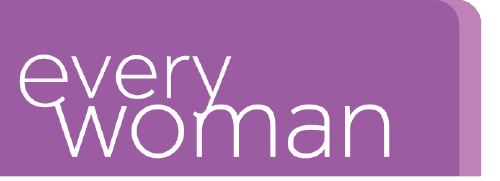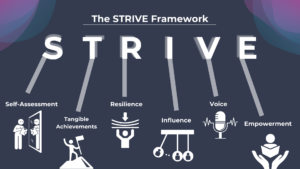Burnout has been under a lot of high-profile discussion over the past few years as world issues forced organisations and individuals to consider mental health and wellbeing at work like never before. According to Mental Health UK, burnout is defined as a state of physical and emotional exhaustion that can occur when you experience long-term stress in your job or have worked in a physically or emotionally draining role for a long time.
In Deloitte’s Women at Work 20221 survey, 53 percent of women said their stress levels were higher than they were a year ago, and almost half felt burned out. But what happens if, instead of overwork and sustained pressure, you have too little? Less problematic, you might think. Not so, say a growing band of researchers who note that feeling unchallenged and unstimulated for a long period can in fact be as stressful as too much challenge. This phenomenon is also known as ‘boreout’ and for many people, represents another — subtler and less well-known — form of burnout.
Put simply, boreout is a feeling of disengagement at work due to being ‘underloaded’, says psychologist Steve Savels, who compares it in some ways to burnout as a condition of energy mismanagement. Liz Wiseman, author of Impact Players, Rookie Smarts and Multipliers and a researcher into this phenomenon, agrees — but adds that boreout and burnout may also have more of a bearing on each other than it might appear at first glance — with burnout not necessarily always a function of too much work, but of the work we do having too little impact.
And boreout may be more pernicious as a phenomenon than we think. Gallup’s 2021 State of the Global Workplace report2 found that 80% of employees are either not engaged or are actively disengaged at work — a lack of engagement that results in lost productivity equal to $8.1 trillion per year. In addition, a Udemy survey3 found that more women than men report workplace boredom (48 percent vs. 39 percent).
The quiet energy drain
Perhaps the biggest challenge for those suffering from boreout is its ‘under the radar’ nature. Unlike burnout which can be visible and obvious in expression, boreout is an energy that can be chronic but insidious and difficult to articulate to line managers.
‘Boreout is different from burnout in the sense that bored-out employees rarely collapse out of exhaustion. Bored-out people may be present physically but not in spirit, and people can keep doing this for a good while,’ says Lotte Harju an assistant professor of organisational behaviour at EM Lyon Business School, who has studied boreout for years.
Workers who realise they’re experiencing boreout may also be reluctant to flag it up as an issue to line managers or human resources. While the behaviours that feed into burnout – overwork, drive – are appreciated and rewarded by employers, boreout ‘reflects a lack of interest, a lack of motivation [and] these are very much taboo in organisations,’ says Harju.
Like burnout, both organisational and individual factors can impact this phenomenon, and knowing what boreout is and being able to identify it is critical for tackling it. Red flags include struggling to find work to fill your day, doing repetitive work on autopilot and generally being stuck in your ‘comfort zone’ for too long — with the result that your personal and professional development comes to a halt. Crucially, the symptoms of boreout and burnout can be very similar, and can include apathy, disengagement, irritation, cynicism, depression and feelings of worthlessness. And while both require different solutions, ultimately, they come down to re-establishing a balance that is optimal for employees to explore who they are at work, know their worth and express their talents.
Rebalance yourself
Arguably the rise of boreout also dovetails with what is an increased search for meaning and purpose in working life for many employees. For Harju, the fundamental experience of boreout is meaninglessness – ‘the experience that the work doesn’t really have any purpose, that there’s no point’.
As such, exploring your motivations and drivers can allow you to become more engaged at work which in turn can be energy-generating in itself. This energy can then lead to you doing work that challenges you more and which provides clear value to clients — and in time become a self-fulfilling and sustainable antidote to this apathetic burnout. Preventing boreout can also be aided by leaders simply taking the time to communicate to workers why what they’re doing is valued and valuable.
For wellbeing guru and everywoman expert Sharon Aneja, the answer to boreout lies in awareness, and in small, sustained steps to move ourselves back to the middle of what positive psychology calls the ‘optimum performance curve’.
‘At one side of this model are ‘strengths overplayed’ and at the other ‘strengths underplayed’ and there’s an optimal point, the ‘golden mean’, roughly past halfway, where you are at your best, have satisfaction in your job and feel engaged,’ says Aneja. ‘On either side of that curve though, you’re not engaging yourself and not engaged with, enjoying or challenged by your work, which is just as detrimental.’
She suggests using the PERMA model — looking at your performance, engagement, relationships, meaning and achievement in turn to see where you are out of alignment.
‘I don’t like to use the term ‘work-life balance’ because there is life with work as a part of it. But within that dynamic it is about balance — and if we want to be at optimal performance it is about tapping into our intrinsic motivators — satisfying our internal reward system — rather than focusing on external rewards.
‘The important thing is that it is about the small steps, it’s never about the big leap — and which ones we can take every day that can increase how we feel about ourselves, our work and how good we feel,’ says Aneja.
Wiseman also suggests reducing what she calls the ‘phantom workload’, the factors which, along with our workload, can be stressors such as workplace politics, complex collaborations and endless meetings in order to free up valuable energy — as well as negotiating for the guidance, coaching or mentoring tools you need long before you think you need them.
These supports can allow you then to focus on raising the level of challenge, but not the volume of work in your role. It is about keeping job challenges in the sweet spot where they have scope to stretch and create visible impact, but where they also stay manageable. Wiseman also recommends treating your job description less like a boundary and more like a ‘base camp’ from which you can survey your work landscape and pursue opportunities that can create meaning for you.
In the end, restoring equilibrium from boreout is about finding balance and restoring your energy through meaning every bit as much as it is for beating burnout.
‘We need to look beyond the ‘where’ and ‘when’ of the workplace and focus on the ‘what’ and ‘why’ of the work,’ notes Wiseman. ‘When we increase our impact-per-work hour, we can rekindle that fire in our bellies. And, when work is a build-up experience not a burnout experience, we feel a sense of fulfilment and purpose that feeds our souls.’





